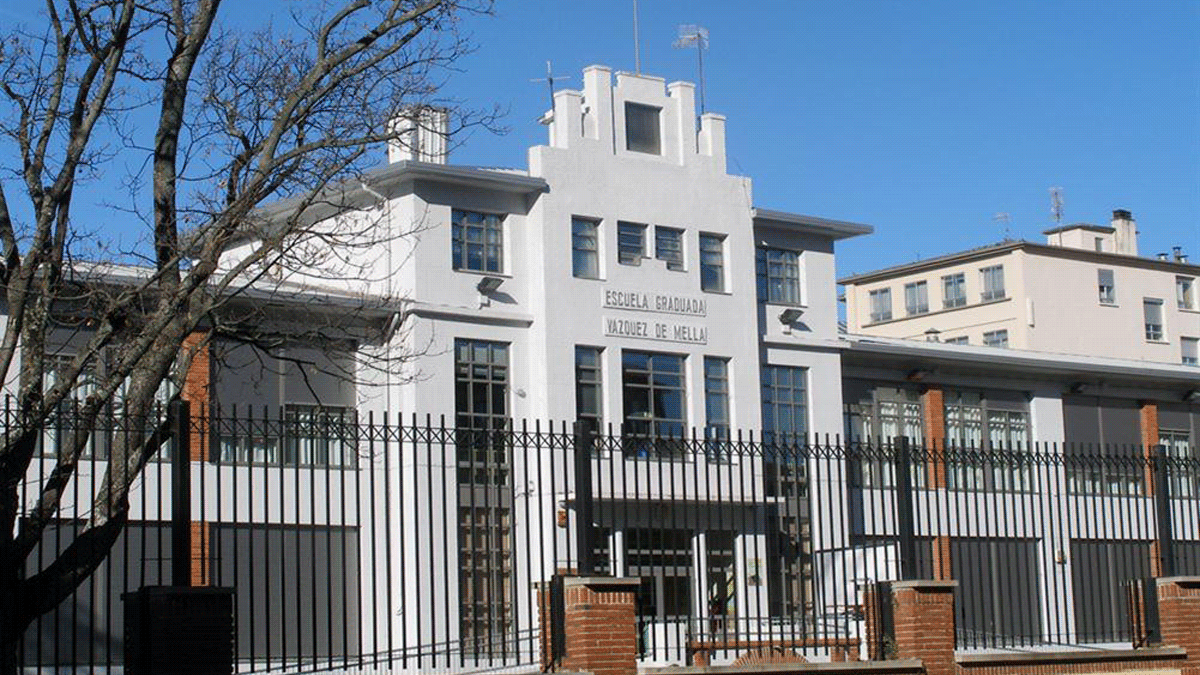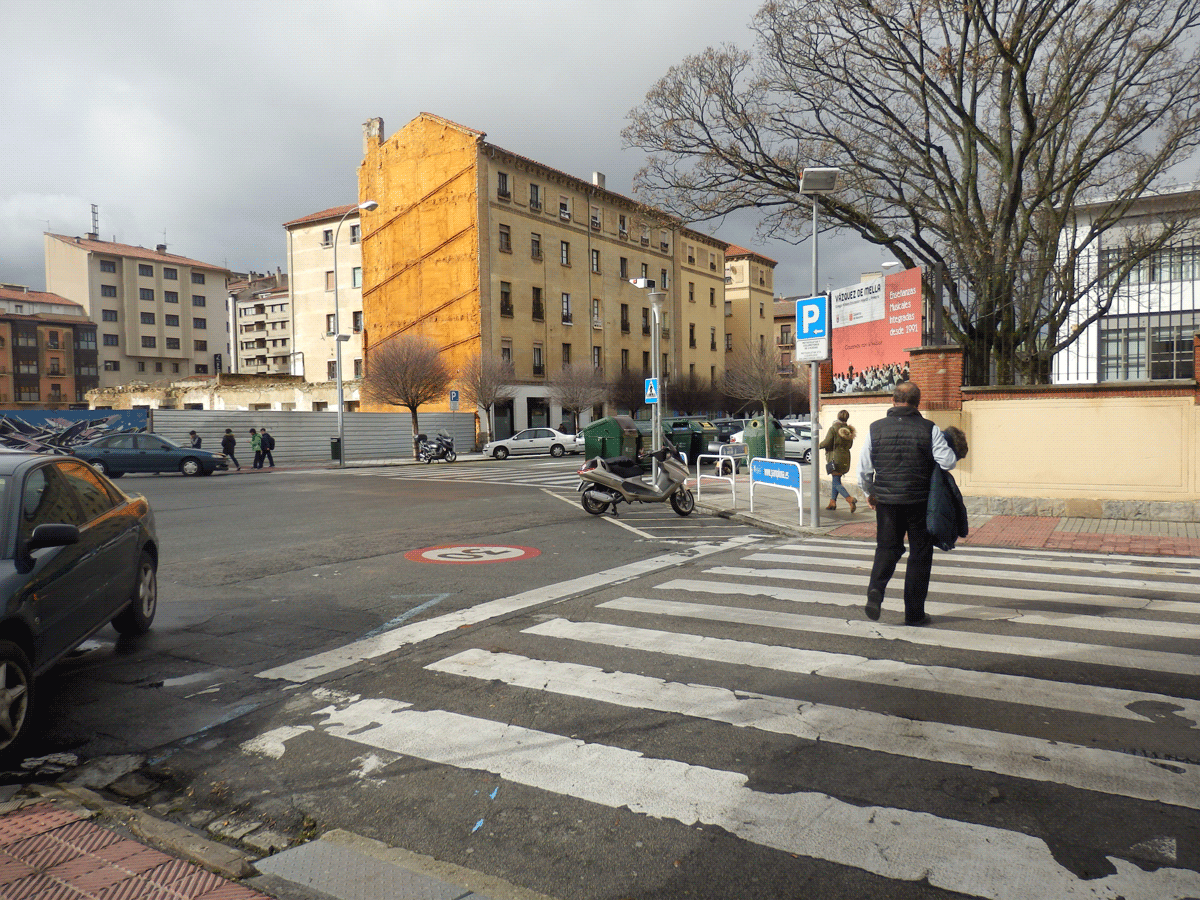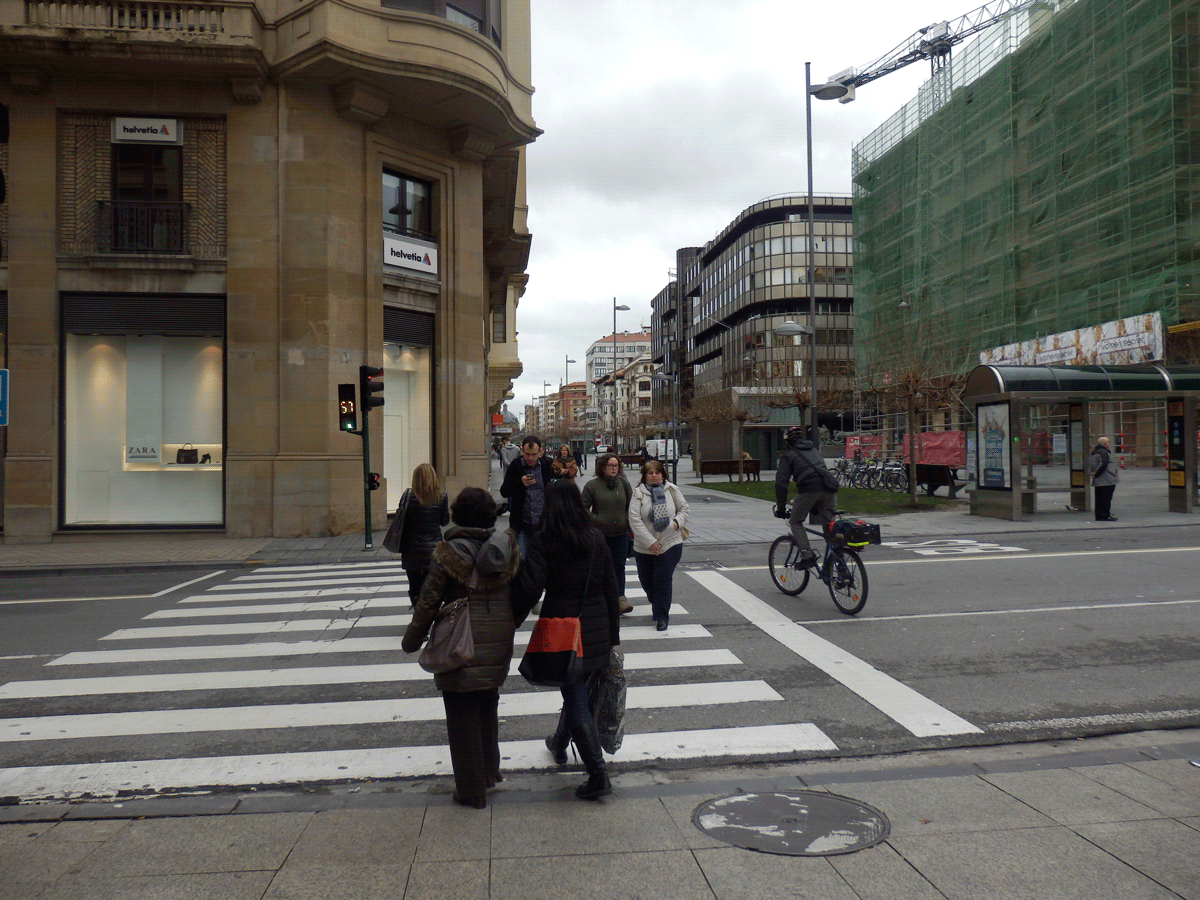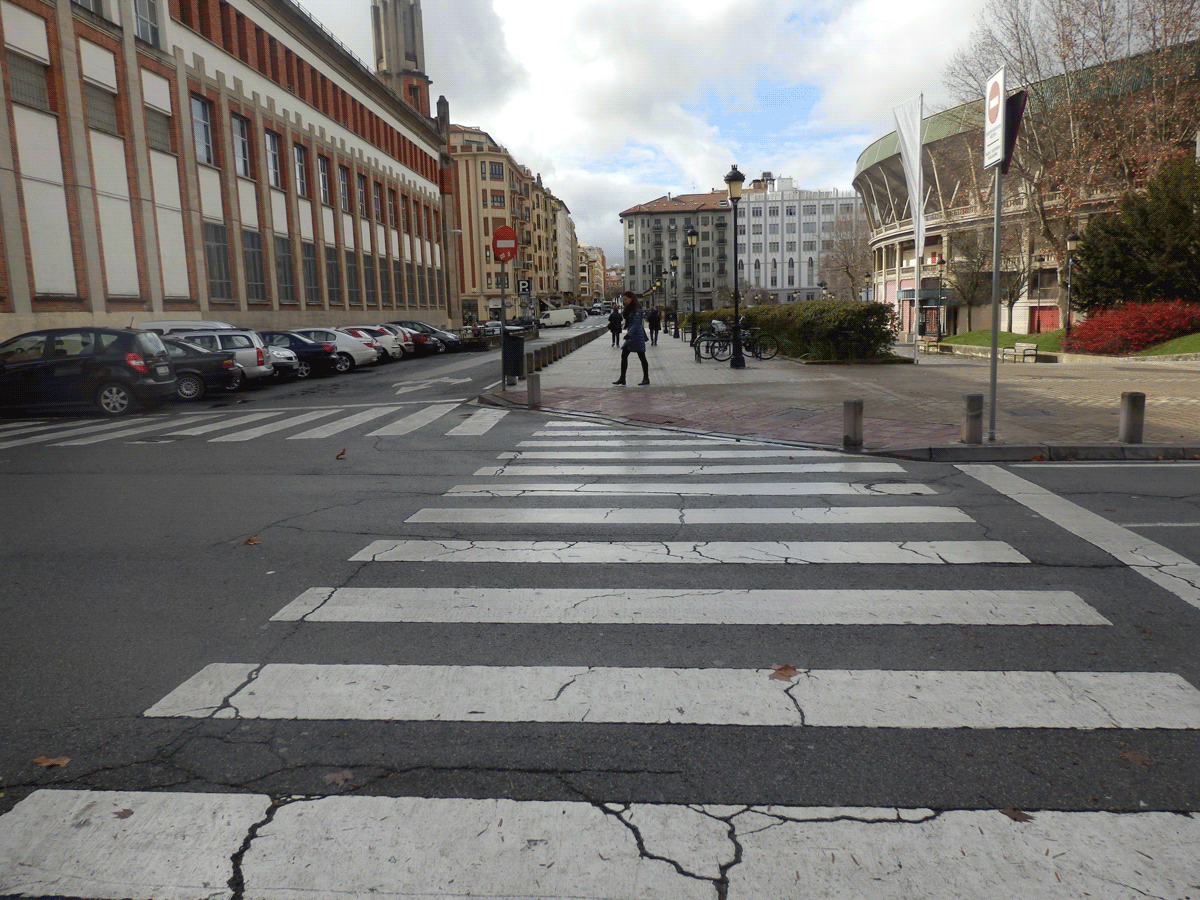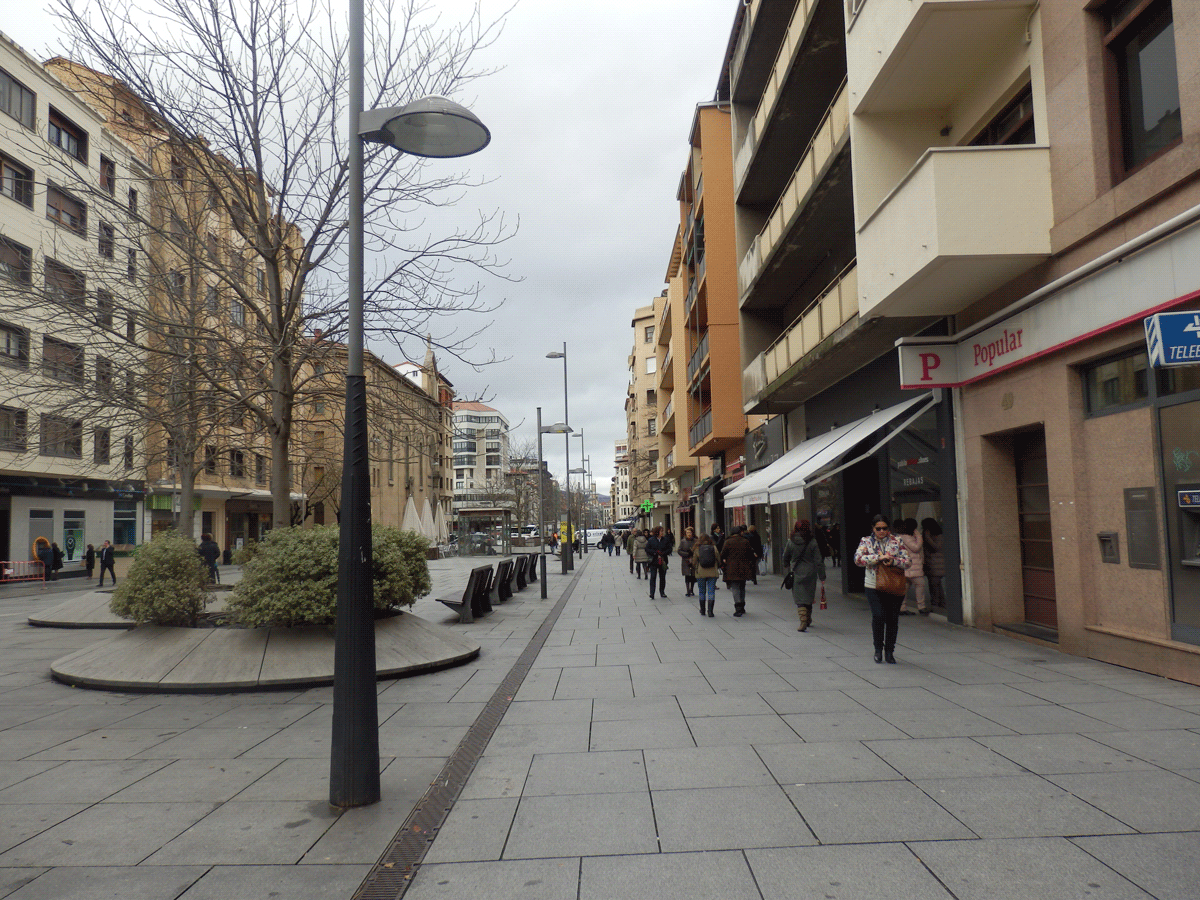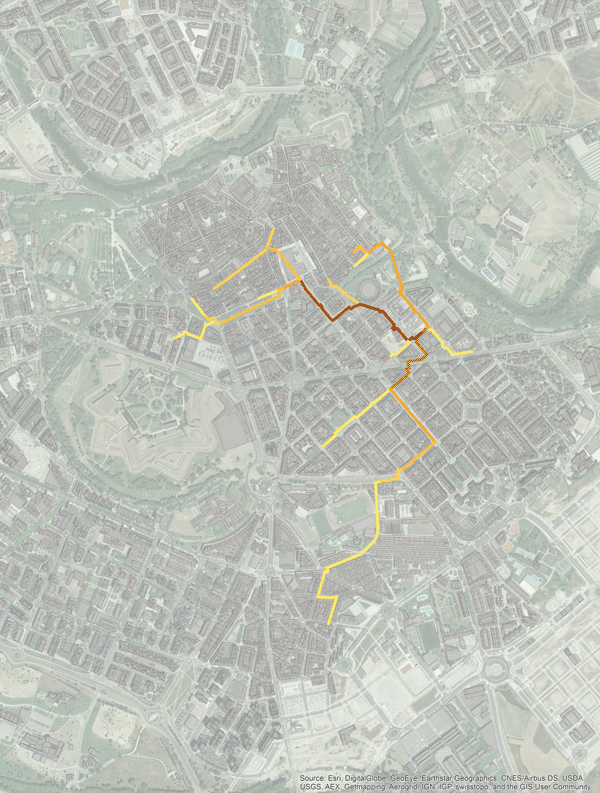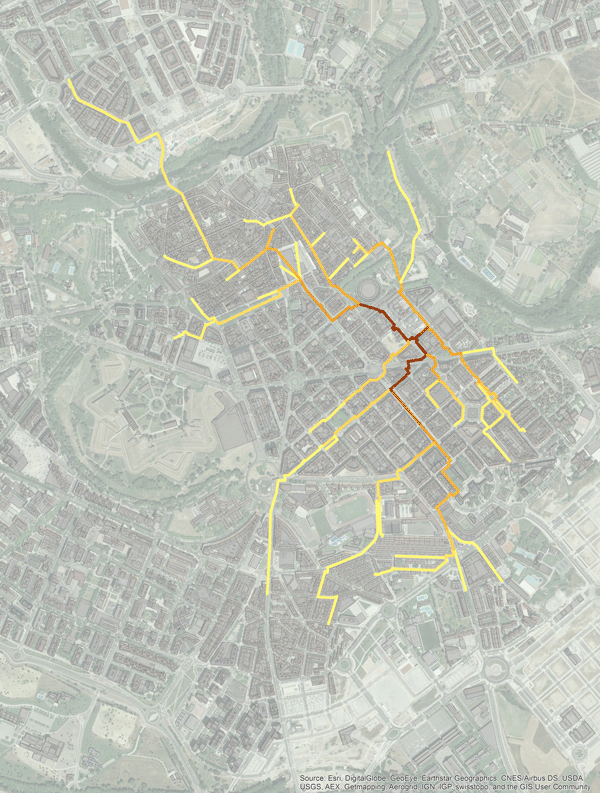We applied the WCT tool to the design of School Routes to ensure they are not only safe, but also convenient, suitably adapted, pleasant, motivating and inspiring for children.
Context
In 2015 the first Safe School Route project was carried out in the Municipality of Pamplona, involving the Vázquez de Mella-Bayonne school, in which SUMA-USC took part, applying its WCT methodology. The tool allows data to be obtained on pavements and pedestrian crossings, which are assigned a score according to their more favourable or unfavourable characteristics from the standpoint of children travelling on foot.
Is the shortest route always the best one?
School routes are often drawn up by the simple method of identifying the starting points (the children’s homes) and finding the shortest way to reach the school. Such routes are then designated as “school routes”, along which safety will be reinforced as required, generally involving the presence of police officers on pedestrian crossings without traffic lights.
Safety
Several factors come into play when determining whether a street crossing is more or less safe. These are taken into account by our WCT methodology to score these crossings: traffic lights, red/green light times, visibility (seeing and being seen from a children’s height), number of lanes to be crossed, one- or two-way traffic, intensity of traffic, priority design, accessibility… Safety is one of the most influential factors taken into consideration by the WCT tool to score and draw up the children’s school routes, but it should not be the only one.
School route, not just safe
Walking the route from home to school should be experienced by children as a source of health, relationship with and knowledge of the city, a sense of integration, and the greatest possible number of possible stimuli. There are numerous factors that need to be taken into account: safety, absence of heavy traffic and few parked cars, wide and well-maintained pavements, trees and flowers, motivating elements, friendly environment, well-maintained and suitably adapted street furniture, absence of obstacles.
Route analysis using WCT
After entering the points of origin (children’s homes) and destination (school), the routes are drawn up based on the best WCT score, without compromising the need to keep the distance to a minimum.
The routes are then analysed and improvement proposals are made for the pavements and crossings.
For full information on the project click here to download the presentation.

